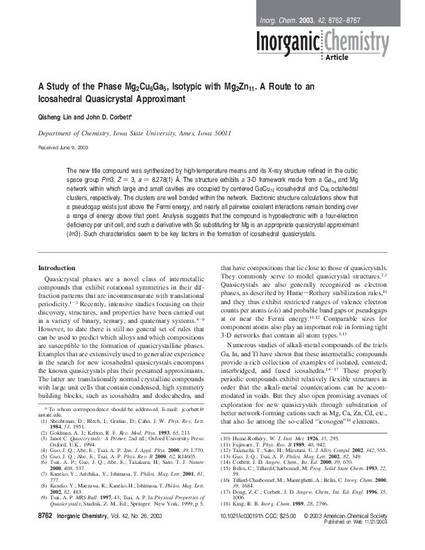
The new title compound was synthesized by high-temperature means and its X-ray structure refined in the cubic space group Pm3̄, Z = 3, a = 8.278(1) Å. The structure exhibits a 3-D framework made from a Ga14 and Mg network within which large and small cavities are occupied by centered GaCu12 icosahedral and Cu6 octahedral clusters, respectively. The clusters are well bonded within the network. Electronic structure calculations show that a pseudogap exists just above the Fermi energy, and nearly all pairwise covalent interactions remain bonding over a range of energy above that point. Analysis suggests that the compound is hypoelectronic with a four-electron deficiency per unit cell, and such a derivative with Sc substituting for Mg is an appropriate quasicrystal approximant (Im3̄). Such characteristics seem to be key factors in the formation of icosahedral quasicrystals.
Available at: http://works.bepress.com/qisheng-lin/22/

This article is from Inorganic Chemistry 42 (2003): 8762, doi: 10.1021/ic030191h. Posted with permission.